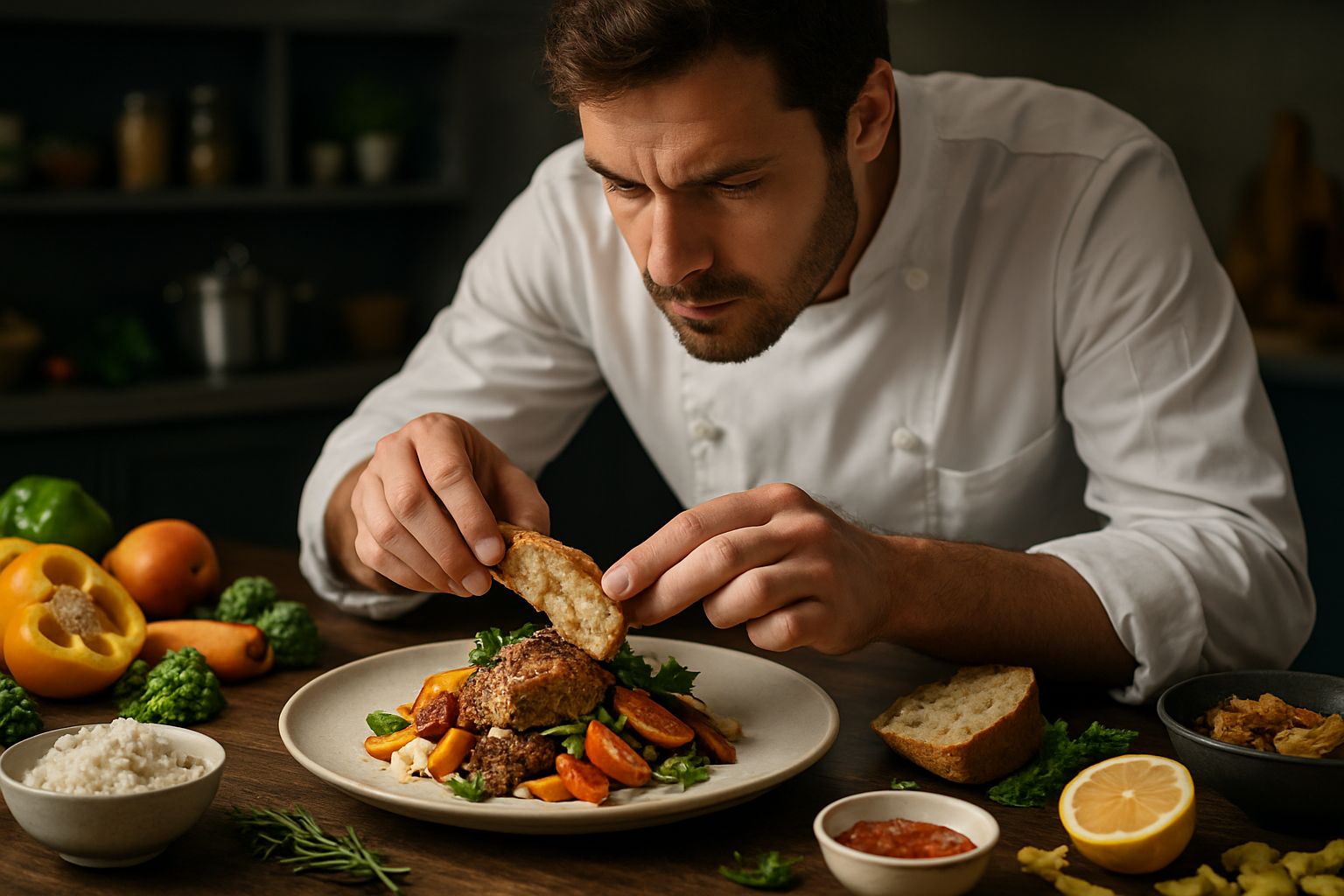Culinary Alchemy: Transforming Leftovers into Gourmet Delights
Breathe new life into yesterday's meals with innovative techniques that turn forgotten fridge finds into culinary masterpieces. This guide explores creative ways to elevate leftover ingredients, reducing food waste while expanding your culinary repertoire. Discover the art of transforming mundane remnants into exciting, restaurant-worthy dishes that will impress even the most discerning palates.

Texture Transformation Techniques
One of the most effective ways to revitalize leftovers is by altering their texture. This can completely change the eating experience and make the dish feel entirely new. For instance, crispy techniques can add an exciting dimension to soft leftovers. Try turning leftover mashed potatoes into crispy potato cakes by shaping them into patties, coating them in breadcrumbs, and pan-frying until golden. Similarly, day-old rice can be transformed into a crunchy base for a vibrant poke bowl by spreading it thinly on a baking sheet and crisping it in the oven. For proteins, consider shredding leftover roast chicken or pork and crisping it in a pan with spices to create a flavorful filling for tacos or lettuce wraps. By focusing on texture, you can create contrasts that make each bite interesting and satisfying, elevating simple leftovers into gourmet experiences.
Flavor Fusion and Global Inspiration
Incorporating global flavors is an excellent way to reinvent leftovers and expand your culinary horizons. Start by building a pantry of international condiments and spices that can quickly transform familiar ingredients. For example, leftover grilled vegetables can be tossed with a Middle Eastern za’atar spice blend and served over couscous for a quick and flavorful meal. Or, reimagine last night’s roast beef by slicing it thinly and using it in a Vietnamese-inspired bánh mì sandwich with pickled vegetables and sriracha mayo. Even simple leftover pasta can be given new life by stir-frying it with soy sauce, ginger, and garlic for an Asian-fusion dish. By drawing inspiration from different cuisines, you can create exciting flavor combinations that make your leftovers feel like entirely new meals, broadening your taste experiences in the process.
Unexpected Ingredient Pairings
Pushing the boundaries of traditional flavor combinations can lead to delightful culinary discoveries when working with leftovers. Consider pairing ingredients that might not typically go together but complement each other in unexpected ways. For instance, leftover roasted sweet potatoes can be puréed and incorporated into a chocolate mousse, adding depth and natural sweetness. Try combining leftover grilled fruit, such as peaches or pineapple, with savory elements like prosciutto and aged cheese for a sophisticated appetizer. Experiment with adding leftover cooked grains to your morning smoothies for added texture and nutrition. Even leftover coffee can find new life in a savory barbecue sauce or as a marinade for meats. By thinking creatively about ingredient pairings, you can create unique dishes that surprise and delight the palate, turning simple leftovers into conversation-starting culinary experiences.
Presentation and Plating Techniques
The way a dish is presented can dramatically alter perception and enjoyment, especially when working with leftovers. Elevate your leftover creations by focusing on professional plating techniques. Start by choosing the right plate or bowl – sometimes a simple change in serving vessel can make leftovers feel brand new. Experiment with different plating styles, such as deconstructed presentations that separate elements of a dish for visual appeal. Use garnishes thoughtfully to add color, texture, and freshness. For example, transform leftover stew into an elegant dish by serving it in a shallow bowl, artfully arranging the components, and finishing with a drizzle of herb oil and microgreens. Even simple leftovers like rice can be molded into attractive shapes using cookie cutters or ramekins. Remember, we eat with our eyes first, so taking the time to plate your leftover creations beautifully can turn a simple meal into a gourmet experience.
Culinary Alchemy Tips & Facts
• Always cool leftovers quickly and store them properly to maintain food safety and quality.
• Leftover herbs can be blended into compound butters or pestos to add instant flavor to future dishes.
• Stale bread makes excellent homemade croutons, breadcrumbs, or a base for bread pudding.
• Overripe fruits are perfect for smoothies, jams, or baked goods.
• Leftover wine can be frozen in ice cube trays for future use in cooking.
• Pickle leftover vegetables to extend their life and add a tangy element to meals.
• Invest in quality, airtight containers to keep leftovers fresh for longer.
• Learn the “first in, first out” principle to rotate your leftovers effectively.
• Experiment with different cuisines to find new ways to use common leftover ingredients.
• Remember that many dishes, like stews and curries, often taste better the next day as flavors meld.
Transforming leftovers is more than just a practical solution to reduce waste; it’s an opportunity to flex your culinary creativity and expand your cooking skills. By applying these techniques and thinking outside the box, you can turn everyday leftovers into exciting, gourmet meals that rival restaurant offerings. Embrace the challenge of leftover transformation, and you’ll not only save time and money but also discover new favorite dishes and techniques along the way. Let your kitchen become a laboratory for culinary alchemy, where yesterday’s meals are the raw materials for tomorrow’s gastronomic delights.





